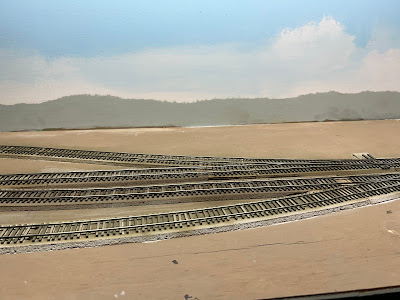Having repaired the buckled track work here in Nooksack, I returned to the workbench to finish a small craftsman kit that I started a few weeks ago. This is the Juniper Freight House, a Fos Scale Models kit. When I first ordered it I intended to use it as part of the Curtis Cannery complex. Now, I am thinking that I will use it, at least temporarily, here in the front of the benchwork where I have thought I would have a fuel supply company. It may become a lumber and fuel supply company. This little freight house fits nicely here, between the fascia and the spur track. Signage and details will have to wait until I determine the structure's use.
This was the first kit that I have built from Fos Scale Models. The instructions were complete and relatively clear. The drawings showing the location of bracing were particularly helpful. By bracing the walls, they did not warp with staining or painting. I did let them dry under weight which may have helped prevent warping too. I used Hunterline Driftwood stain on the walls and for unpainted wood. I drybrushed Americana Buttermilk on the walls after the stain had dried to give the appearance of worn and weathered paint. For the plastic windows, I used a rattle can dark green, while I brush painted the wood trim and freight doors with Vallejo's Camo Olive Green.









